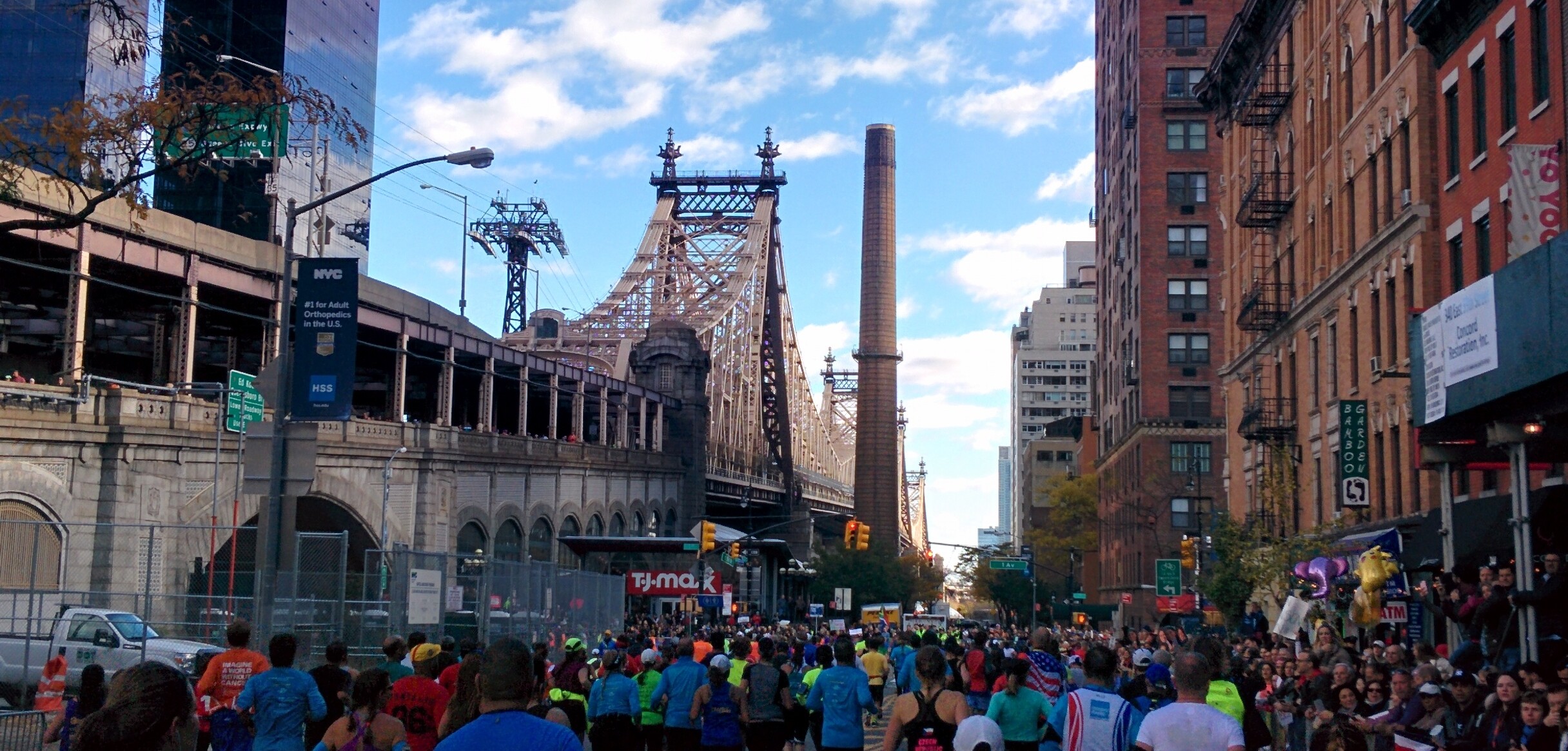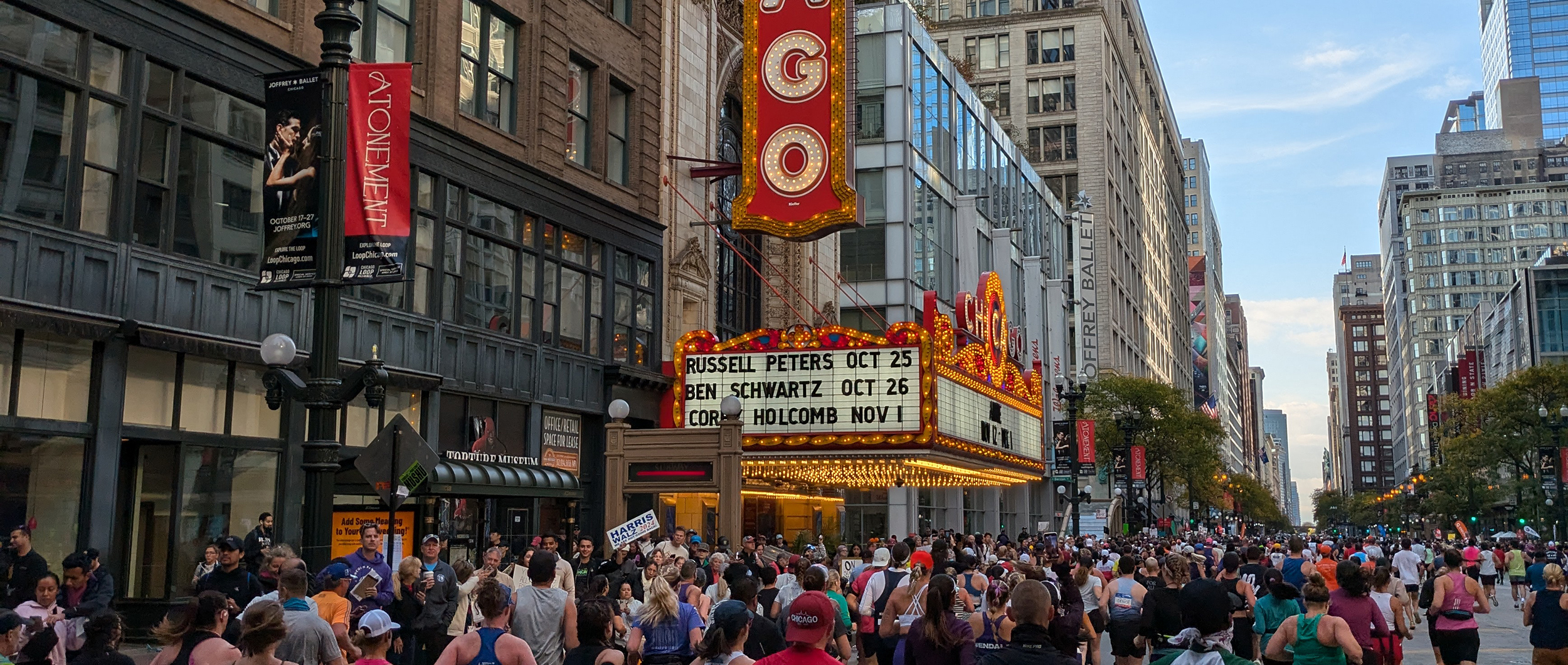News
NOW OFFERING RACE-SPECIFIC TRAINING PLANS!

Ten years ago, I set a goal to complete a race in each of the 50 states in the United States of America. What kind of race it is doesn't matter to me; it could be a running race, a triathlon, cycling race, or anything else that has official results and finish line.
Racing in each of the states isn’t an uncommon goal, but how I approach it is. I’ve met many people on a 50 states quest; most of them are planning to complete either a marathon or half marathon in each state.
My desire, however, has less to do with the actual race itself, and more to do about exploring each state in the United States and getting a glimpse at what it offers. I want to meet the people of the state, experience something that is unique to that state, and explore it a bit via a race that “feels” like that state.
To-date, I’ve completed races in 26 states. I’ve swam over coral reefs in Hawai’i in an open water swim, climbed a mountain as many times as I can in ten hours in Alaska, run on the beachfront in South Carolina, cycled through alpine forests in Idaho, baked in the sun running in the deserts of Arizona, and run through Cinderella’s Castle at Walt Disney World in Florida.
The ongoing COVID-19 Pandemic slowed my progress on this goal, but this past weekend, for the first time in over two years, I traveled to a different state to complete a race - the Rock ‘n’ Roll New Orleans Half Marathon.
I chose this race for a few reasons. First and foremost, at the time that I registered, this race advertised itself as the only race that runs through the French Quarter. As such, I would get to see the city of New Orleans - and most notably, the old sections of the city - by running on closed roads. This definitely ticked my “the race needs to be unique to the state I’m running in” box on my quest.
I also chose this event because the Rock ‘n’ Roll Running Series is currently owned by The IRONMAN Group. I have a strong working relationship with The IRONMAN Group on a professional level as a coach, but the reason I maintain and nurture that relationship is that this company puts on quality races and crafts great racing experiences for the athletes that register for their events. They are well-supported, organized, and consistent. I knew that I would have a well-supported event by choosing a race in the Rock ‘n’ Roll Running Series.
The timing of this event was really nice; I wasn’t terribly interested in ticking Louisiana off my list in August. The February race date sounded wonderful and like a great time to visit New Orleans for the first time.
Finally, I chose this event because running a half marathon was a big goal of mine and the timing of this race worked well for me goal-wise. As I shared last fall, I had a moderately severe case of COVID-19 in January 2021 and was diagnosed with “post-COVID conditions” (commonly known as “Long Haul”) in March 2021. It’s been a challenge and a long road for me to return to activities that were normal for me in my pre-COVID-19 life; to-date, there are still many activities I have not been able to return to. If I could safely build to train for a half marathon, this race would represent not only the first half marathon I’ve run since getting sick, but my longest run in over 2.5 years.
My coach - Adam Ruszkowski of ARo Sports Coaching - and I felt that the timeline between the Mountain Goat Run (which was on October 24, 2021) and Rock ‘n’ Roll New Orleans (scheduled for February 6, 2022) would be an adequate amount of time to safely build me from the 10-mile distance to the 13.1-mile distance. To some reading this, that timeline might look “long.” I’m here to tell you that managing Long Haul is tricky - especially as it relates to the fatigue that is in play - and timelines are much longer than “normal” (aka what was normal for me before I got sick). I don’t fight this, and neither does Coach Adam. We just work with what my body can tolerate on a weekly basis and adjust as-needed based on how I respond.
My training went well. I have continued to work with Coach Adam in-person twice per week for strength training, and this has been instrumental in helping me develop the durability and strength to be able to tackle goals that involve increased use of my cardio-respiratory system. We also were able to build my run/walk intervals from 3:00 running / 1:00 walking (which is what I used in the Mountain Goat) to 6:00 running / 1:30 walking. Running without walking breaks is not possible for me anymore physically; I experience vertigo and other Long Haul symptoms if my heart rate goes too high or stays elevated for too long.
I was a big fan of the run/walk method prior to getting COVID-19 (I even wrote a Coach Tip Tuesday about it back in 2018!), but since having COVID-19, it’s been the one and only way I can incorporate running back into my life. There are some folks out there who feel like “failures” if they walk when they “should” be running. I’m here to tell you that implementing this strategy can enhance your running and make you stronger overall; I’m personally living proof of it, but so are several of the athletes who I coach who have trusted me to incorporate it into their training. (Spoiler: Implementing this strategy at Rock 'n' Roll New Orleans resulted in my having extremely consistent splits for the entire 13.1 miles.)
I traveled down to New Orleans a few days prior to the race so I could see some of the sights and experience the city. Here are some of my favorite things that I visited and places I ate:
On Friday, I stopped by the race expo to get my packet (attending the expo is mandatory; there is no race day packet pickup for this event). The City of New Orleans had a COVID-19 vaccination requirement in place for most indoor locations in the city at the time that the race was happening, and it applied to the race expo since it was held indoors at the New Orleans Ernest N. Morial Convention Center. Proof of vaccination or a negative COVID-19 test within 72 hours was required, so there was extra security at the expo enforcing this ordinance. Other than that, this felt like a normal race expo. I got my packet, said hello to my friends from The IRONMAN Group who were working this event, and put my feet up in the NormaTec Recovery Boots.
In the final lead up to the race, I learned that the City of New Orleans had denied Rock ‘n’ Roll the permits necessary to close down the streets in the city to hold the race on the course that it’s been held on in the past. As such, there was a course change to a roadway along Lake Pontchartrain at the University of New Orleans. I will admit that I was very unenthusiastic about this change, though I understand that it’s not Rock ‘n’ Roll’s fault at all. Instead of the “uniquely Louisiana” experience I set out to have, I’d be running a course that was entirely concrete, that included six turnarounds/out-and-backs, was very similar to many other half marathons in New Orleans, and looked like many, many other waterfront routes around the United States.
Race day came, and I was a bit apprehensive about how I would fare, as I had not felt great at all in my final two runs before race day. My body had felt achy and fatigued and the runs honestly had felt hard. I went into the race knowing that I would give the best effort I could on the day, but expecting that I may not feel great and might need to modify my plan to walk more than run.
Though I had trained up to run/walk intervals of 6:00 running / 1:30 walking, I felt that a strategy of 5:00 running / 1:00 walking would be more appropriate for this race due to the climate difference from Syracuse to New Orleans, how my body was feeling, and the duration of this event (which was going to be three miles longer than my longest training run). I set my Garmin Forerunner up so that it would vibrate when it was time to change intervals from walk to run and back again (which meant I could execute my race plan without having to look at my watch). I then strapped on my ever-trusty Nathan Vapor Air hydration vest, did my warm-up exercises, and headed into the starting corrals.
Rock ‘n’ Roll was using a rolling start system governed by chutes and light indicators; every three seconds, the lights would change from red to green, indicating that the next row of runners could start. I think that this system worked well and prevented congestion in the first couple of miles. There were over 6,000 runners in the race, and this allowed them to be a bit more spread out at the beginning, which made for a more pleasant experience on the course overall.
I paid close attention to all the signs marking the course since there were so many turn-arounds and out-and-backs on the course. I wanted to be sure I never cut the course or inadvertently ended up on the 10K course (which was running concurrently with the half marathon). The course was well-marked, and I didn’t have trouble staying on-course. There were many, many on-course entertainment experiences at least every mile that were definitely “New Orleans” - everything from Mardi Gras parade floats, to street performers, to zydeco groups, to jazz musicians. Even though the course itself was pretty boring, Rock ‘n’ Roll really did a good job of jazzing it up (pun intended).
Surprisingly, I was feeling okay as I progressed through my run/walk intervals. I ran completely on effort, though I did keep an eye on my heart rate every now and again to make sure it was holding in a good range for me. I kept my effort level lower, around a 3-4 on a Rating of Perceived Exertion (RPE) scale of 1-10. I drank a couple ounces of water from my hydration vest every time I walked, and I drank a couple of ounces of Gatorade Endurance each time it was offered at an aid station on-course. I fueled with HUMA Gels every 30 minutes. This hydration and fueling strategy worked perfectly for me.
My lack of enthusiasm about the course itself didn’t lessen as I ran, but I will say this: the fact that the course was relatively “boring” helped me focus deeply on exactly how my body was feeling; I wasn’t distracted by the sights, etc. around me. As I approached the 15K mark, I started to feel some achiness and fatigue throughout my body, but it wasn’t insurmountable. In Mile 11, I had one run/walk interval that was hard to start back from, but other than that, I felt good and adequately recovered after each walking break.
When I reached Mile 10, I looked at my timer on my watch (this was the first time I looked at anything to do with pace or time in the race) and realized that I had passed this mileage point seven minutes faster than I ran the 10-mile Mountain Goat Run in October. Doing the math quickly in my head, I was astounded to realize that I would likely finish the half marathon in around 2 hours, 20 minutes.
Heading into his race, my only true goal was to finish the race and check Louisiana off of my 50 States list. However, if I could have that and a “good for me” time-based result, that would make it even sweeter. I was going to be ECSTATIC if I finished between 2:30-2:35. Realizing I was on track to be substantially under that time was, well, unexpected.
I will interject here and say that my best race performances have always - ALWAYS - come when I have let my effort, the race day, and the course conditions dictate my outcome. I don’t try to control a race outcome; I control what I can control - my effort, my hydration, my fueling, and my trust in my training/preparation - and I let races organically unfold. Rather than trying to control an outcome, I let an outcome “come to me.”

As I headed into the final 5K of the race, I continued to feel good (relatively speaking…of course, I was feeling the accumulated fatigue of the race). At this point, I saw a Coast Guard Black Hawk helicopter; it was doing some training maneuvers over the lake. Around Mile 11, I saw a Coast Guard plane doing the same thing. Seeing them made me think of my Boppy, who was so, so proud to have served the United States of America by enlisting in the Coast Guard. I never saw those Coast Guard aircraft again at any point all day, so it made me think of J.K Rowling’s quote from Harry Potter and the Prisoner of Azkaban: “The ones who love us never really leave us.” I felt that those Coast Guard aircraft were serving as a reminder that Boppy hasn’t truly left me; he is always with me. I thought about him and my Mimi a lot during the race, and seeing those Coast Guard craft sure gave me an extra boost in what was the toughest part of the race for me.
I headed into the finish chute feeling strong, and I crossed the finish line in 2:19:40. Not only was this the first time I’ve run 13.1 miles since having COVID-19, but it was also the fastest half marathon I’ve run at all since 2017. One year ago, I was at a point in my COVID-19 journey where I couldn’t move a chair six feet without needing a rest break (that is not an exaggeration), and now I’m able to run a half marathon again. Tears filled my eyes as I crossed the finish line.
There are so many pieces in this puzzle that led to this successful day. Coach Adam continues to be a significant and important person in my training life and in my living with Long Haul. Consistent training within what I can currently do (versus using what I used to be able to do or what I wish I could do as a starting point or barometer) has enabled me to both enjoy training on a day-to-day basis and then the subsequent fruits of those labors. Listening to my body, training on effort, and sticking to what I know works for me enabled me to both reach a goal and then have a time result that surpassed even my wildest expectations.
“Start where you are. Use what you have. Do what you can.” -Arthur Ashe



































































































Have a question or ready to get your TRAINING started?
Fill out our Contact Form to the right and we will get back to you shortly!